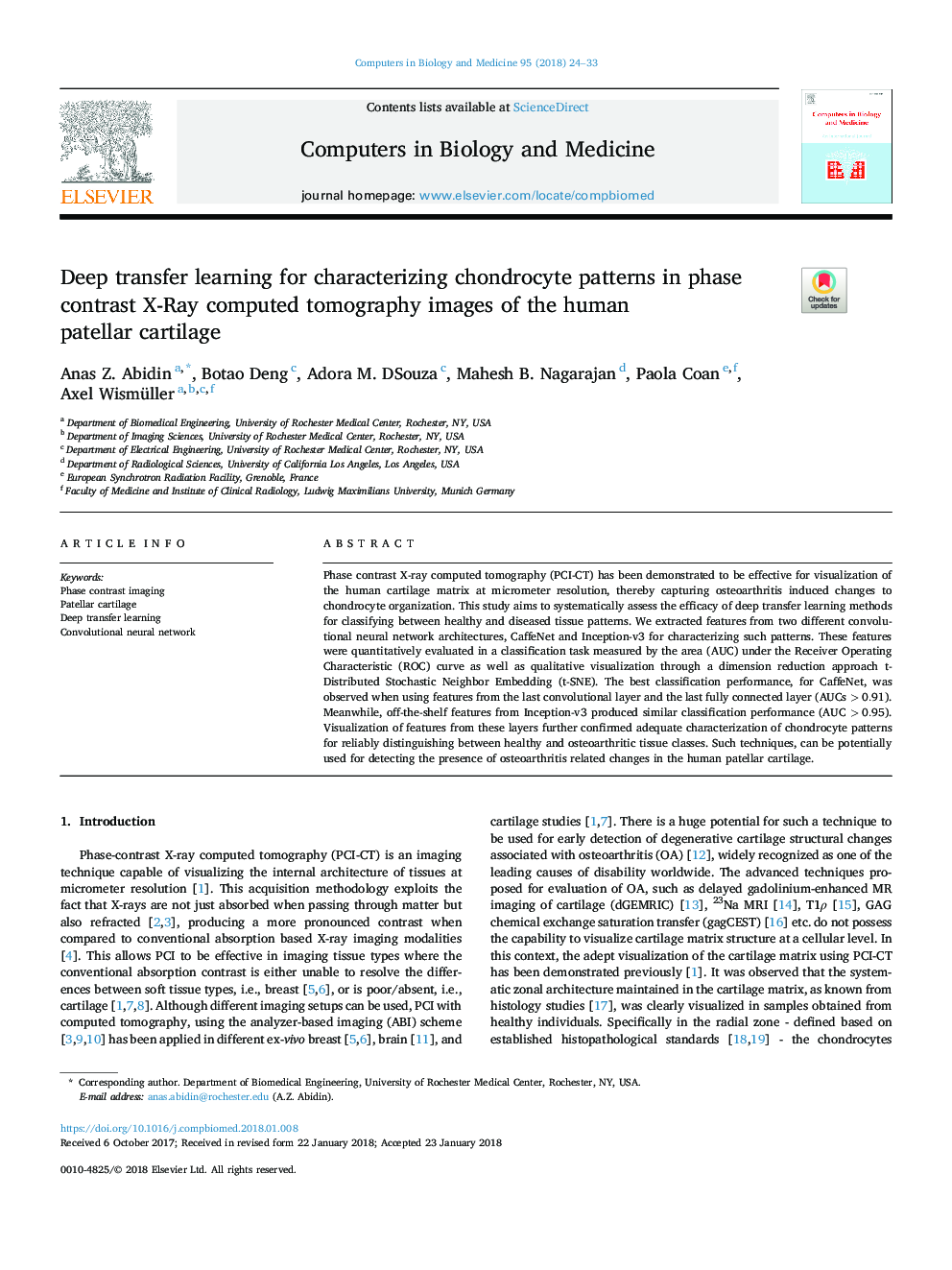| Article ID | Journal | Published Year | Pages | File Type |
|---|---|---|---|---|
| 6920603 | Computers in Biology and Medicine | 2018 | 10 Pages |
Abstract
Phase contrast X-ray computed tomography (PCI-CT) has been demonstrated to be effective for visualization of the human cartilage matrix at micrometer resolution, thereby capturing osteoarthritis induced changes to chondrocyte organization. This study aims to systematically assess the efficacy of deep transfer learning methods for classifying between healthy and diseased tissue patterns. We extracted features from two different convolutional neural network architectures, CaffeNet and Inception-v3 for characterizing such patterns. These features were quantitatively evaluated in a classification task measured by the area (AUC) under the Receiver Operating Characteristic (ROC) curve as well as qualitative visualization through a dimension reduction approach t-Distributed Stochastic Neighbor Embedding (t-SNE). The best classification performance, for CaffeNet, was observed when using features from the last convolutional layer and the last fully connected layer (AUCs >0.91). Meanwhile, off-the-shelf features from Inception-v3 produced similar classification performance (AUC >0.95). Visualization of features from these layers further confirmed adequate characterization of chondrocyte patterns for reliably distinguishing between healthy and osteoarthritic tissue classes. Such techniques, can be potentially used for detecting the presence of osteoarthritis related changes in the human patellar cartilage.
Related Topics
Physical Sciences and Engineering
Computer Science
Computer Science Applications
Authors
Anas Z. Abidin, Botao Deng, Adora M. DSouza, Mahesh B. Nagarajan, Paola Coan, Axel Wismüller,
